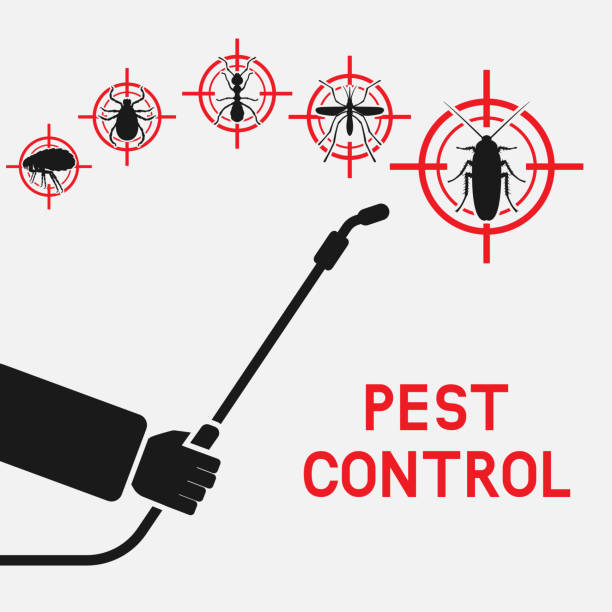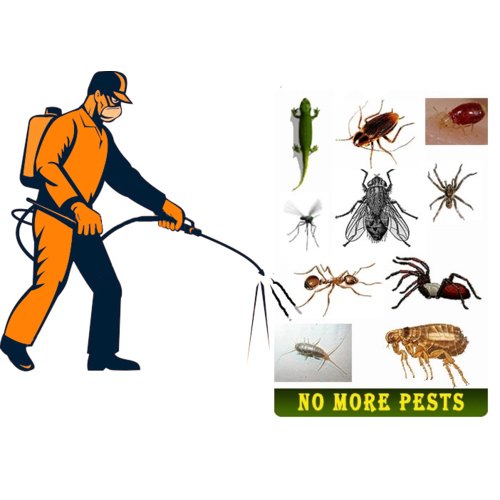Fast Response Times for Pest Issues with Pest Control Lockhart
Wiki Article
Checking Out Invasion and Therapy Methods worldwide of Pest Control
The landscape of parasite control incorporates a myriad of difficulties, specifically as infestations of usual family parasites proceed to develop. Recognizing the behaviors and reproductive patterns of these hassles is critical for developing reliable therapy approaches. By incorporating precautionary steps with sophisticated administration techniques, such as Integrated Insect Administration (IPM), house owners can much better guard their environments. The efficiency of these techniques may vary substantially based on certain conditions. What hidden variables add to the success or failure of these strategies in various settings?
Typical Family Vermin
When it involves handling our living rooms, understanding common family parasites is essential. These insects not only disrupt our convenience yet can also pose health risks and damage home. The most widespread house parasites consist of ants, roaches, rats, termites, and bed insects.Ants, often seen foraging in cooking areas, can contaminate food and develop huge swarms. Rodents, consisting of computer mice and rats, can create structural damage and carry illness like hantavirus and salmonella.
Identifying the indications of these bugs, such as droppings, nests, or bite marks, is essential for very early intervention (Pest Control Lockhart). Correct cleanliness practices, securing entrance factors, and preserving a clutter-free setting are efficient preventative measures. By recognizing these typical house insects and understanding their habits, homeowners can take positive steps to reduce problems, making sure a much healthier living atmosphere
Recognizing Insect Infestations
Pest infestations can intensify swiftly, transforming a small annoyance into a significant problem if not dealt with immediately. Typical factors contributing to invasions include bad cleanliness, architectural susceptabilities, and seasonal modifications that drive bugs inside your home.Determining the kind of parasite is crucial, as various varieties show diverse habits and reproductive rates. For example, rats might develop nests in concealed areas while insects like cockroaches thrive in wet settings. Early discovery commonly rests on recognizing indicators such as droppings, nibble marks, or uncommon audios, which can suggest a trouble prior to it ends up being serious.
Cozy, humid environments can assist in the rapid growth of insect populations, while adjustments in landscape design or building and construction can inadvertently produce favorable atmospheres. An informed technique to understanding these dynamics lays the foundation for reliable parasite monitoring approaches in the future.
Therapy Techniques and Methods
Effective treatment techniques and techniques are necessary for minimizing pest problems and recovering a safe atmosphere. A multifaceted approach is frequently best, integrating chemical, biological, and mechanical methods customized to the particular insect and the severity of the infestation.Chemical therapies include using insecticides and herbicides, which can successfully eliminate pests. However, appropriate application and adherence to safety guidelines are important to decrease threats to human beings and non-target microorganisms. Integrated Pest Management (IPM) encourages the sensible use of chemicals as a last hotel, depending instead on tracking and limit degrees to establish click site treatment demands.
Biological control techniques involve presenting all-natural predators or bloodsuckers to decrease bug populations. This technique is increasingly preferred, especially in farming settings, as it advertises environmental sustainability.
Mechanical approaches, such as catches and barriers, give instant relief from insects without introducing chemicals. Options consist of sticky traps for bugs or physical barriers for rodents.
Inevitably, the option of treatment method should take into consideration the particular parasite, the setting, and possible effects on human health and ecological communities. A balanced mix of these techniques can successfully manage invasions while advertising long-term insect control solutions.
Preventative Actions for Homes
Proactively resolving pest concerns prior to they rise is essential for maintaining a healthy home environment (Pest Control Lockhart). Executing efficient precautionary procedures can significantly reduce the chance of problems, inevitably guarding both your residential or commercial property and health
Correct landscape design likewise plays a vital duty in avoidance. Maintaining hedges and trees trimmed away from your home reduces the possibilities of insects locating their way indoors. In addition, guarantee that drain systems are operating successfully to protect against standing water, which can reel in mosquitoes and various other pests.
Lastly, regular assessments are a good idea. Consistently checking for indicators of insect task allows for early treatment. By taking on these safety nets, homeowners can create an environment that is less friendly to bugs, thereby boosting their general top quality of life and lowering the requirement for considerable insect control interventions.
Business Parasite Control Approaches
A comprehensive strategy to commercial additional info insect control is crucial for organizations aiming to maintain a secure and sanitary atmosphere. Effective techniques entail a combination of routine assessments, staff member training, and the execution of Integrated Pest Monitoring (IPM) methods.Routine inspections enable very early detection of parasite activity, allowing for prompt treatment. Services need to establish a regular timetable for these analyses, concentrating on high-risk areas such as kitchens, storage spaces, and garbage disposal sites. Employee training is similarly vital; staff needs to be informed on the signs of parasite problems and the relevance of reporting them promptly.
Carrying out IPM techniques helps minimize parasite concerns sustainably. This consists of habitat adjustment, such as sealing entrance points and decreasing mess, as well as employing natural deterrents prior to turning to chemical treatments.

Additionally, collaborating with an accredited pest control copyright guarantees accessibility to professional understanding and advanced therapy alternatives. This partnership can lead to tailored bug control plans customized to the details needs of business, decreasing threats and improving total efficiency. Eventually, an aggressive and educated method promotes a pest-free environment, guarding both public health and business credibility.
Final Thought
In conclusion, effective parasite control requires a thorough understanding of usual family pests and their habits, combined with targeted treatment approaches. Implementing preventive procedures together with treatment strategies such as Integrated Insect Management and organic control improves the capability to alleviate problems.Report this wiki page